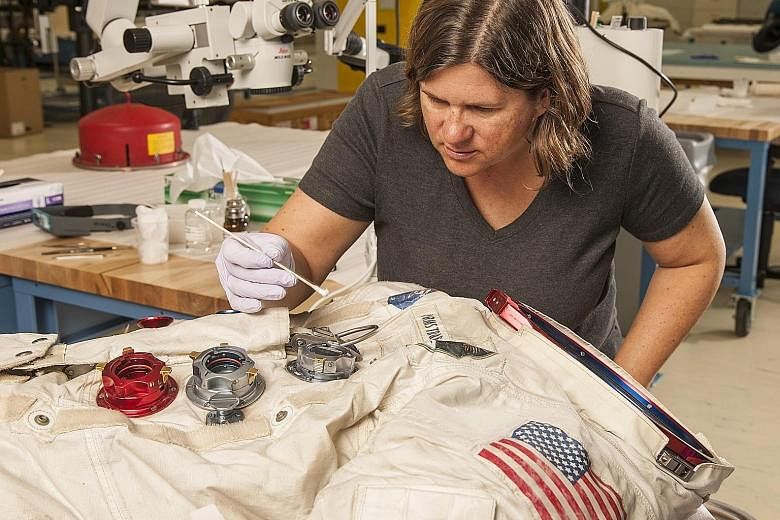WASHINGTON • It helps a lot when you are the Smithsonian Institution. So when the world's largest museum complex asked for aid to conserve a few of its most beloved objects, the response was immediate.
With the help of Kickstarter, the crowd-funding space for creative projects, it asked for US$500,000 (S$693,000) for work on the spacesuit Neil Armstrong wore in 1969 when he walked on the moon.
Armstrong was the first person to walk on the moon.
The National Air and Space Museum campaign hit its goal in only five days. Another US$200,000 target was added - for the suit worn by Alan Shepard, the first American in space.
The response to the 2015 campaign was tremendous - US$719,779 from 9,477 backers, more than enough to get the suits back on view in time for the 50th anniversary in August 2019 of the Apollo 11 lunar landing.
Next came the 78-year-old ruby slippers and scarecrow costume from The Wizard Of Oz (1939).
The Smithsonian's National Museum of American History asked for US$300,000 to conserve Judy Garland's footwear and US$85,000 for the outfit worn by Ray Bolger as he and Garland danced down the Yellow Brick Road.
The initiative drew US$349,036 from 6,451 backers - not the full US$385,000, but enough to allow officials to boast that there is no place like the Smithsonian.
It has readied a third campaign that is likely to launch this year, but details are unknown for now.
"We're reaching audiences that we might not reach through other channels," said Mr Scott Tennent, the Smithsonian's director of advancement communications.
He noted that three-quarters of the Kickstarter backers are new to the Smithsonian.
But even as the Kickstarter campaigns have proved a success, there is a price to pay too.
Though a Smithsonian fund- raiser originally said the cost of the Reboot The Suit campaign was about 8 to 10 per cent, it ended up topping 17 per cent.
For the Oz drive, records showed that for every US$100 donation, the Smithsonian spent US$38 on the costs of the Kickstarter project, including the video, rewards and Kickstarter's fees, leaving US$62 for Dorothy's slippers.
"A lot of organisations get excited because they think it's cheap and easy. Cross that out," said Ms Lucy Bernholz, director of the Digital Civil Society Lab at Stanford University, of crowd-funding projects.
The Better Business Bureau Wise Giving Alliance fund-raising standard calls for organisations to spend less than 35 per cent of all contributions on fund-raising, including donations, legacies and grants.
Kickstarter was launched in 2009 and, in its first eight years, organisations such as the Jewish Museum in New York and National Public Radio have used it to support a range of projects.
Kickstarter's staff guided the Smithsonian from the start.
Both projects followed Kickstarter's recipe: Start with a memorable social media hashtag, add splashy videos and cool rewards - including space ice cream, exclusive T-shirts, behind-the-scenes tours - and finish with the promise of insider information about the work as it unfolds.
But there is little data to show whether crowd-funding will join galas and direct mail as a reliable method of cultural fund-raising.
The Smithsonian reported that 461 of the space-suit backers contributed to the Oz project.
Experts in philanthropy agree that online efforts have raised significant funds by capturing the attention of younger donors and that organisations must make online giving a priority.
A Pew Research Centre report from 2015 found that crowd-funding was more popular with younger people, college graduates and those with relatively high household incomes and rarely used by people older than 65.
If cultural organisations want to attract the next generation of supporters, they must go digital.
But they also must consider the expenses against the results.
"They can weigh the costs of their various fund-raising programmes and consider the other benefits, like media attention, like 10,000 new donors who they can now go back to," said Ms Sarah Nathan, a professor at Indiana University's Lilly Family School of Philanthropy.
"Those might be worth the costs."
WASHINGTON POST


